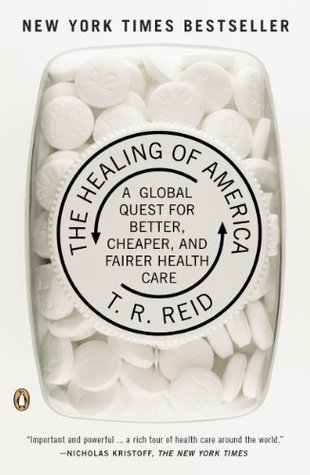More on this book
Community
Kindle Notes & Highlights
by
T.R. Reid
Read between
January 6 - January 6, 2020
In Bismarck countries, both health care providers and payers are private entities. The model uses private health insurance plans, usually financed jointly by employers and employees through payroll deduction.
Unlike the U.S. health insurance industry, though, Bismarck-type plans are basically charities: They cover everybody, and they don’t make a profit.
In this system, health care is provided and financed by the government, through tax payments. There are no medical bills; rather, medical treatment is a public service, like the fire department or the public library. In Beveridge systems, many (sometimes all) hospitals and clinics are owned by the government; some doctors are government employees, but there are also private doctors who collect their fees from the government. These systems tend to have low costs per capita, because the government, as the sole payer, controls what doctors can do and what they can charge.
The shortcomings of our system can be grouped into three basic problems: coverage, quality, and cost.
How many people go bankrupt because of medical bills? In Britain, zero. In France, zero. In Japan, Germany, the Netherlands, Canada, Switzerland: zero. In the United States, according to a joint study by Harvard Law School and Harvard Medical School, the annual figure is around 700,000.
But out of twenty-three wealthy countries, the American health care system ranks dead last when it comes to keeping newborns alive.
The United States is the only developed country that relies on profit-making health insurance companies to pay for essential and elective care.
most for-profit insurance companies maintain a medical loss ratio of about 80 percent, which is to say that 20 cents of every dollar people pay in premiums for health insurance doesn’t buy any health care.
The United States is the only developed country that allows insurance companies to refuse coverage to people for fear that they might get sick.
The solution to adverse selection is to mandate that everybody pay for health insurance, through either a private company or a government program.
That requirement is known as the “individual mandate,” and it is a necessary corollary to “guaranteed issue.”
Universal health care coverage doesn’t have to start at the national level.
The lesson for policymakers elsewhere is that such windows of opportunity come along only every so often.”
To get serious preventive care, therefore, you need an incentive structure that encourages long-term investment.
Indeed, an insurance company may see no savings at all from preventive testing or procedures, because the health problem to be avoided may not develop until the patient is over sixty-five and thus covered by Medicare.
Until we adopt a health care system that encourages it, preventive health care will remain
largely inaccessible to far too many Americans.
Which inequalities will society tolerate? Is it acceptable that some people are left to die because they can’t see a doctor when they get sick? That question encompasses a more basic question: Is health care a human right?
In many developed countries, people have quicker access to care and more choice than Americans do.
Our insurance companies are mainly profit-making enterprises. They enhance their profits not by paying for people’s health care, but by finding ways not to pay.
Far from being “foreign,” each of these systems is in use today in the United States. For veterans, active-duty military personnel, and Native Americans, we use the British model. For people over sixty-five, we’ve adopted the Canadian model (we even use the name for it that was coined by the socialist who invented the Canadian system: Medicare).
As an economic principle, a unified system is a powerful force for cost control.
If hospitals are underpaid by one payer—for example, Medicare—they make up the difference by raising their fees for other payers—for example, private insurance plans.
Universal coverage has to come first. Universal coverage is an essential tool to control costs and maintain the overall quality of a nation’s health.
There are all sorts of government mandates to buy things. It’s illegal to walk down the street naked in any American city.That’s a mandate to buy clothes. People are jailed for failing to feed their children; that’s a government mandate to buy food.
These two important measures—the quality-adjusted life year (QALY) and the disability-adjusted life year (DALY)—are used by health care planners around the world to set priorities. They help decide which medical treatments or drugs are worth spending money on, and which ones don’t provide a significant return for the money spent.
A patient who is “confined to bed; unable to wash or dress self; unable to perform usual activities; in extreme pain or discomfort; moderately anxious or depressed” would be rated at a “health state” of—0.429.5 To put this number into plain English, the economists rate that patient’s health state as better off dead. But she and her grandchildren might prefer to see her stay alive a while longer.
In summary, then, it is not as easy as it might seem to find “the best health care system in the world.” Different studies produce different rankings; countries that excel in some areas do less well in others. Still, there is a coterie of developed countries that are providing quality health care, distributing it
fairly and equitably—and doing all that for much less money than the United States is spending.


